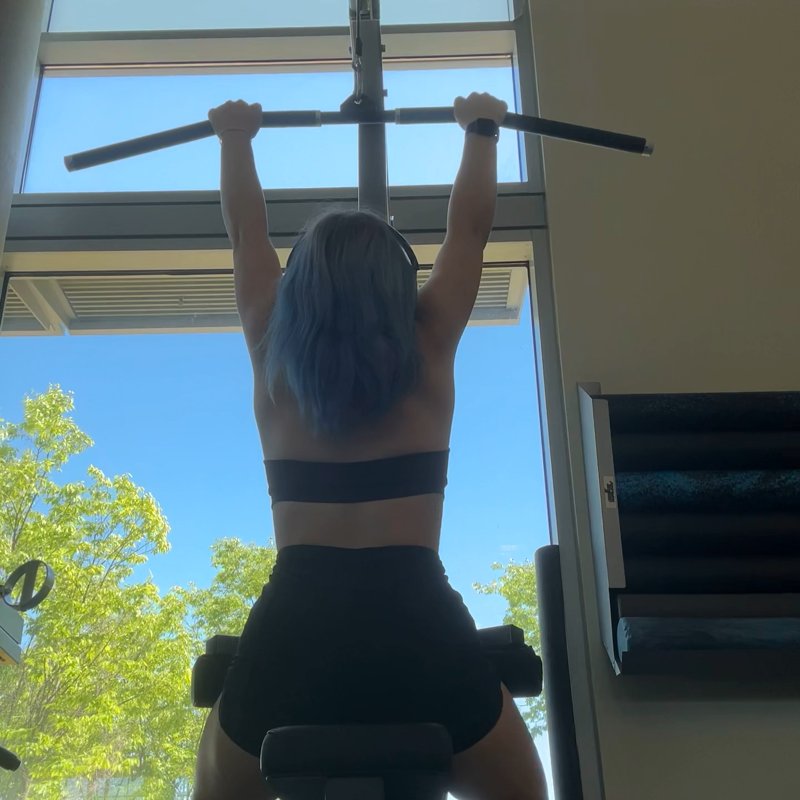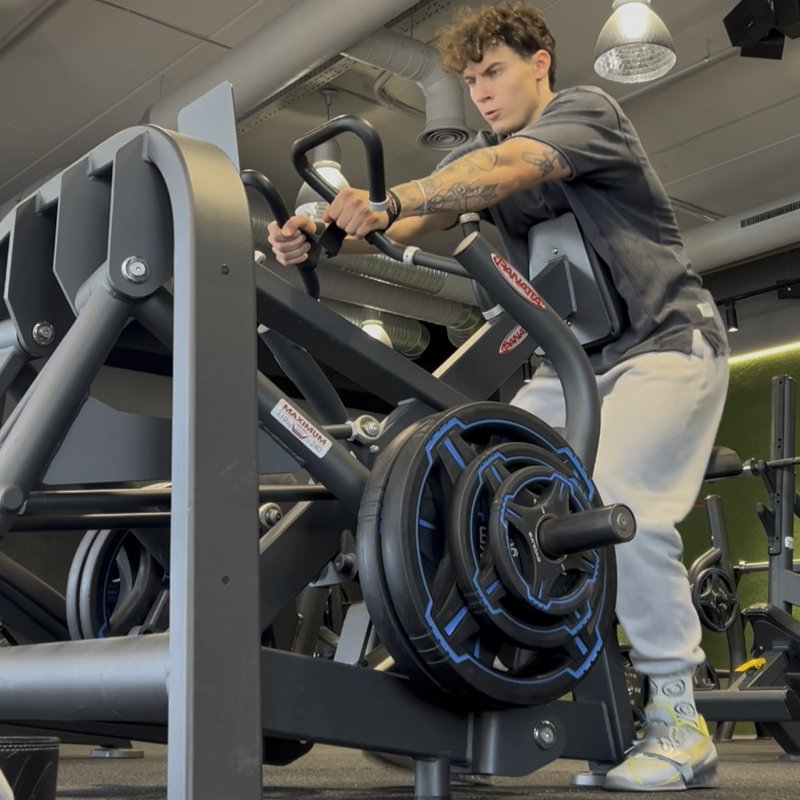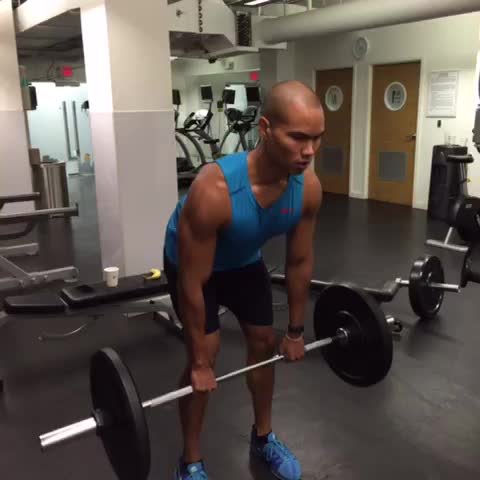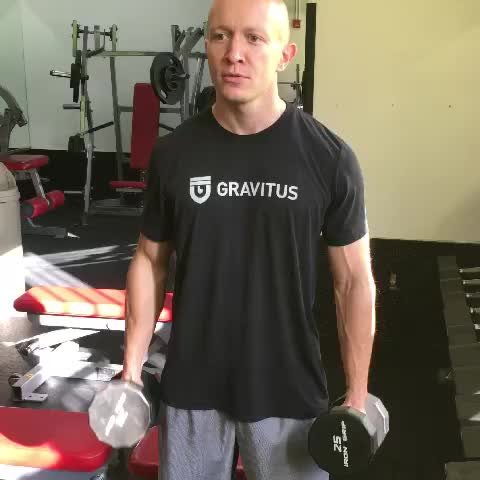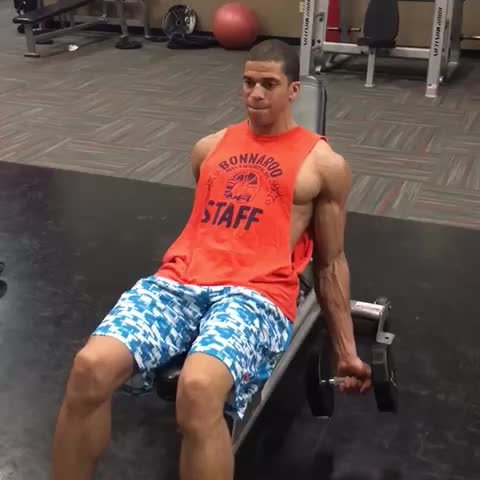Wide-Grip Seated Row: The Ultimate Guide
The Wide-Grip Seated Row is a compound back exercise that targets the latissimus dorsi, rhomboids, and rear deltoids by pulling a wide bar attachment toward your torso while seated, emphasizing back width development.
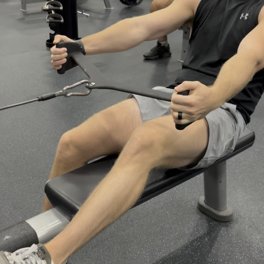
Quick Facts
Key Benefit
Emphasizes back width and upper back thickness
Primary Muscles
Lats, Posterior Deltoids, Rhomboids, Traps
Secondary Muscles
Abdominals, Biceps, Brachialis, Erector Spinae, Forearms
Equipment
cable machine
Difficulty
Beginner
Type
Compound
In This Guide
Ready to master the Wide-Grip Seated Row?
Track your progress, see improvements over time, and build strength consistently.
Download GravitusThe Wide-Grip Seated Row stands as one of the most effective exercises for developing back width, thickness, and overall posterior chain strength. This variation of the traditional seated row utilizes a wider grip to place greater emphasis on the upper back muscles and outer portions of the latissimus dorsi, contributing significantly to that coveted V-taper physique.
Unlike narrow-grip rowing variations that tend to focus more on the lower lats and mid-back, the wide grip position increases the recruitment of the upper back musculature, particularly the trapezius, rhomboids, and rear deltoids. The exercise also provides the benefit of constant tension throughout the movement thanks to the cable mechanism, creating an optimal environment for muscle growth and strength development.
Whether your goals include enhancing back aesthetics, improving posture by strengthening the muscles that retract the shoulder blades, or building functional pulling strength, the Wide-Grip Seated Row delivers excellent results with relatively low technical demand, making it suitable for beginners and advanced lifters alike.
Benefits of the Wide-Grip Seated Row
The Wide-Grip Seated Row offers several distinct advantages for back development and overall upper body strength.
Enhanced Back Width
The wide grip position increases activation of the outer portions of the latissimus dorsi, contributing significantly to the appearance of a wider back and more pronounced V-taper.
Upper Back Development
Places greater emphasis on the upper back muscles including the rhomboids and trapezius, which are critical for proper posture and shoulder function.
Posterior Deltoid Engagement
Effectively targets the rear shoulders, helping to balance anterior deltoid development from pushing exercises and creating more complete shoulder development.
Improved Posture
Strengthens the muscles responsible for scapular retraction and depression, directly counteracting the forward-shoulder position common in today's technology-heavy lifestyle.
Joint-Friendly Pulling
The seated position with back support minimizes lower back stress compared to bent-over rowing variations, making it accessible for those with certain lower back concerns.
Consistent Resistance
The cable mechanism provides constant tension throughout the entire range of motion, creating optimal stimulus for muscle development even in the stretched position.
Proper Form & Technique
Setup
- Adjust the seat height so your chest is aligned with the cable pulley.
- Select an appropriate weight and attach a wide bar to the cable.
- Sit facing the machine with your feet firmly placed on the platform or floor.
- Extend your arms to grasp the bar with a wide, overhand grip (hands positioned well outside shoulder width).
- Sit tall with your chest up, shoulders back, and maintain a slight arch in your lower back.
- Your torso should be at approximately 90 degrees to the floor or with a slight backward lean of 5-10 degrees.
Movement
- Initiate the movement by driving your elbows back while keeping them at shoulder height or slightly below.
- Pull the bar toward your body, aiming for the lower chest/upper abdominal area.
- Focus on squeezing your shoulder blades together (retraction) as the bar approaches your torso.
- Keep your chest elevated and avoid leaning backward excessively to generate momentum.
- At the end of the movement, your elbows should be behind your torso with shoulder blades fully retracted.
- Hold the contracted position briefly (1-2 seconds), focusing on the squeeze in your upper back muscles.
Return
- Slowly extend your arms forward in a controlled manner, allowing your shoulder blades to protract.
- Maintain your upright torso position and resist the weight pulling you forward.
- Continue extending until your arms are almost completely straight, while maintaining a slight bend in the elbows.
- Ensure you feel a stretch in your lats and upper back at the end of the extension.
- Without pausing at the extended position, immediately begin the next repetition.
Key Form Tips
Grip Width
Position your hands wide enough to feel tension in your upper back, typically 6-8 inches beyond shoulder width on each side.
Elbow Path
Keep elbows at shoulder height or slightly below, avoiding the tendency to pull them down toward your waist.
Shoulder Blade Movement
Focus on the complete retraction-protraction cycle of your shoulder blades rather than just arm movement.
Torso Position
Maintain an upright or slightly reclined torso position throughout—avoid the common mistake of leaning forward during the extension and backward during the pull.
Wrist Alignment
Keep wrists neutral (neither flexed nor extended) to prevent unnecessary strain.
Breathing Pattern
Exhale during the pulling phase and inhale during the return phase to maintain proper bracing and power output.
Muscles Worked
Primary Muscles
- lats: The large wing-shaped muscles of the back are the primary movers, particularly the upper and outer fibers which are emphasized with the wide grip and contribute significantly to back width.
- Rhomboids: Located between the spine and shoulder blades, these muscles are heavily engaged during the scapular retraction phase of the movement, contributing to mid-back thickness.
- traps: The middle and lower portions of this diamond-shaped muscle assist in retracting and depressing the shoulder blades, receiving significant work during the pulling motion.
- Posterior Deltoids: The rear portion of the shoulder muscles works to extend the arms backward during the rowing movement, particularly with the wide grip position.
Secondary Muscles
- biceps: While not the primary focus, the biceps assist in flexing the elbow during the pulling phase of the row.
- brachialis: These elbow flexors provide assistance during the pulling phase, particularly with the overhand grip which reduces biceps involvement.
- Erector Spinae: These lower back muscles work isometrically to maintain your upright posture throughout the exercise.
- abdominals: The abdominals and obliques engage to stabilize your torso against the pulling force.
- forearms: The grip requirements of the exercise provide substantial work for the forearm flexors and extensors.
Common Mistakes and How to Fix Them
Using Excessive Body Momentum
Rocking backward and forward to move the weight reduces muscle activation and increases injury risk. Fix by selecting an appropriate weight that allows you to control the movement without momentum. Focus on maintaining a stable torso position throughout the entire set. If available, use a chest-supported row machine or place a cushion between your chest and the pad to provide feedback on unwanted movement.
Pulling with Arms Instead of Back
Relying primarily on arm strength rather than back muscles limits the effectiveness of the exercise. Focus on initiating the movement by driving your elbows back and retracting your shoulder blades, thinking of your hands as hooks and your arms as connectors rather than primary movers. Practice the movement with very light weight while focusing exclusively on the sensation in your back muscles. A helpful cue is to imagine squeezing a pencil between your shoulder blades at the peak of each repetition.
Insufficient Range of Motion
Not fully extending the arms at the start or not pulling the bar close enough to the body limits muscle development. Ensure you achieve a complete stretch in the starting position, feeling tension in your lats and upper back. At the end of the pull, the bar should make contact with your lower chest/upper abdomen with shoulder blades fully retracted. If restricted range of motion is due to weight being too heavy, reduce the load to prioritize full range over heavier weight.
Elevated Shoulders
Allowing shoulders to rise toward the ears (shoulder elevation) shifts emphasis from back to upper trapezius and neck muscles. Before initiating each rep, consciously pull your shoulders down away from your ears and maintain this position throughout the movement. Think about putting your "shoulders in your back pockets" as a useful cue. Periodic practice with very light weight can help develop this positioning awareness.
Incorrect Bar Path
Pulling the bar too high (toward upper chest/neck) or too low (toward waist) changes the muscles targeted. Maintain a consistent bar path, pulling the bar toward your lower chest/upper abdomen. Imagine your elbows traveling along a horizontal path directly backward, rather than up or down. Performing the exercise in front of a mirror or recording your form can provide valuable feedback on bar path consistency.
Wrist Deviation
Allowing wrists to bend during the movement creates unnecessary strain and reduces force transfer. Maintain a neutral wrist position aligned with your forearms throughout the entire range of motion. Think of your hands as simple hooks connecting to the bar. If wrist discomfort persists, experiment with different grip widths or consider using wrist wraps for additional support during heavier sets.
Exercise Variations
Grip Variations
-

Extra-Wide Grip Seated Row
Taking an extremely wide grip to maximize upper back and rear deltoid engagement, with hands positioned at or near the ends of the bar.
-

Pronated (Overhand) Grip Seated Row
The standard grip for the wide-grip variation, with palms facing downward, which emphasizes upper back and reduces bicep involvement.
-

Supinated (Underhand) Wide Grip Row
Performing the row with palms facing upward despite the wide grip, which increases bicep activation while still targeting the lats.
-

Mixed Grip Wide Row
Using one hand pronated and one supinated for increased grip strength development and neurological challenge.
Equipment Variations
-

Wide-Grip Machine Row
Performing the movement on a horizontal rowing machine with a wide grip option, which provides fixed movement pattern and often allows for heavier loading.
-

Wide-Grip Band Row
Using resistance bands anchored to a secure point instead of cables, offering a portable alternative with increasing resistance through the range of motion.
-

Wide Grip T-Bar Row
A free-weight variation using a T-bar apparatus with a wide grip attachment, which provides a slightly different resistance curve.
-

Wide-Grip Inverted Row
A bodyweight variation performed by pulling yourself up to a fixed bar with a wide grip while body is positioned underneath, allowing for relative load adjustment by changing body angle.
Execution Variations
-

pectoralis major
Performing the row with your chest against a supportive pad, which minimizes torso movement and lower back involvement.
-

Single-Arm Wide-Grip Cable Row
Executing the movement one arm at a time using a single handle positioned wide from the midline, which helps address strength imbalances and increases core stability demands.
-

Paused Wide-Grip Row
Adding a 2-3 second pause at the point of peak contraction to increase time under tension and enhance mind-muscle connection.
-

Eccentric-Focused Wide-Grip Row
Emphasizing the lowering phase by taking 3-5 seconds to return to the starting position, which can enhance muscle damage and growth stimulus.
Frequently Asked Questions
The primary difference between wide-grip and narrow-grip seated rows lies in muscle emphasis and joint mechanics. With a wide grip, there's greater activation of the upper back muscles—particularly the upper and outer portions of the latissimus dorsi, rhomboids, and rear deltoids—leading to enhanced back width development and upper back thickness. The wider hand position also reduces the degree of elbow flexion required, which decreases biceps involvement and places more emphasis on the back muscles. From a joint perspective, the wide grip creates a different angle of pull that tends to target the horizontal pulling pattern more directly, while narrow grips facilitate a greater range of motion and often allow for heavier loading. Many advanced training programs include both variations to ensure complete back development—wide grip for width and upper back emphasis, narrow grip for thickness and lower lat development. Neither is inherently superior; they simply offer different stimulus patterns that can be strategically utilized based on individual goals and physique balance.
Whether to use lifting straps for Wide-Grip Seated Rows depends on your specific training goals. If back development is your primary objective and you find your grip becoming a limiting factor before your back muscles are adequately stimulated, straps can be a valuable tool. This is particularly true for higher-rep sets or when training with heavier weights where grip fatigue might prematurely end an otherwise productive set. However, if grip strength development is also important to you, consider a balanced approach—performing initial sets without straps to challenge your grip, then employing straps for later sets when grip fatigue accumulates but your back still has more to give. Another strategic approach is to use straps only on your heaviest sets or when performing specialized techniques like drop sets that push beyond normal fatigue thresholds. Remember that grip strength is a trainable quality—if you consistently rely on straps, you may limit the development of this important functional capacity. For most lifters, a judicious use of straps when truly needed rather than as a default provides the best of both worlds.
Yes, feeling Wide-Grip Seated Rows more in your upper back (trapezius, rhomboids, and rear deltoids) than in your lats is completely normal and actually indicates you're performing the exercise as intended. The wide grip position, especially when combined with pulling the bar to the lower chest/upper abdomen region, deliberately shifts emphasis to the upper back musculature. This makes the Wide-Grip Row particularly valuable for developing the structures that contribute to improved posture and upper back thickness. If you specifically want to target the latissimus dorsi more directly, you might consider narrower grip variations, pulling to a lower position on the torso, or incorporating more vertical pulling movements like pulldowns into your routine. Many advanced back training programs include a variety of rowing variations specifically because different grip widths and pulling angles create distinct emphasis patterns across the back musculature. The key is to ensure you're feeling the exercise working the intended muscles without strain or discomfort in the joints, particularly the shoulders and elbows.
For most trainees, incorporating Wide-Grip Seated Rows 1-2 times per week provides sufficient stimulus for development while allowing adequate recovery. If you're following a body-part split routine, include them on your designated back day. For those using upper/lower splits, they fit naturally into upper body sessions. With push/pull/legs approaches, incorporate them during pull workouts. More advanced lifters following specialized programs might train back with higher frequency (2-3 times weekly), potentially including Wide-Grip Rows in one or two of those sessions while using different row variations in others to provide comprehensive stimulus patterns. The key consideration is recovery—if performance declines between sessions or you experience persistent soreness, you may need more recovery time or reduced volume. Another strategic approach is to cycle emphasis, making Wide-Grip Rows a focus movement for 4-6 weeks (higher volume, earlier in workouts), then shifting them to a maintenance exercise (lower volume, later in workouts) while emphasizing other back movements. This periodized approach prevents adaptation plateaus while still developing all aspects of back musculature over time.
While both Wide-Grip Seated Rows and lat pulldowns target the back musculature, they train fundamentally different movement patterns and shouldn't be viewed as interchangeable. Lat pulldowns involve vertical pulling (bringing weight down toward you), primarily targeting the latissimus dorsi through shoulder adduction and extension. Wide-Grip Seated Rows involve horizontal pulling (bringing weight toward your torso), emphasizing the upper back muscles through scapular retraction and elbow flexion. For complete back development, most well-designed programs include both horizontal pulls (rows) and vertical pulls (pulldowns/pull-ups) to develop the back through its full functional range and create balanced muscle development. That said, if you need to temporarily prioritize one movement pattern due to time constraints or specific goals, rows generally offer more comprehensive back development and greater carryover to daily activities and athletic performance. A balanced approach might include both movement patterns in each back workout, or alternate emphasis between them across different training sessions. The specific selection should align with your individual goals, limitations, and the overall structure of your training program.
Video Demonstrations
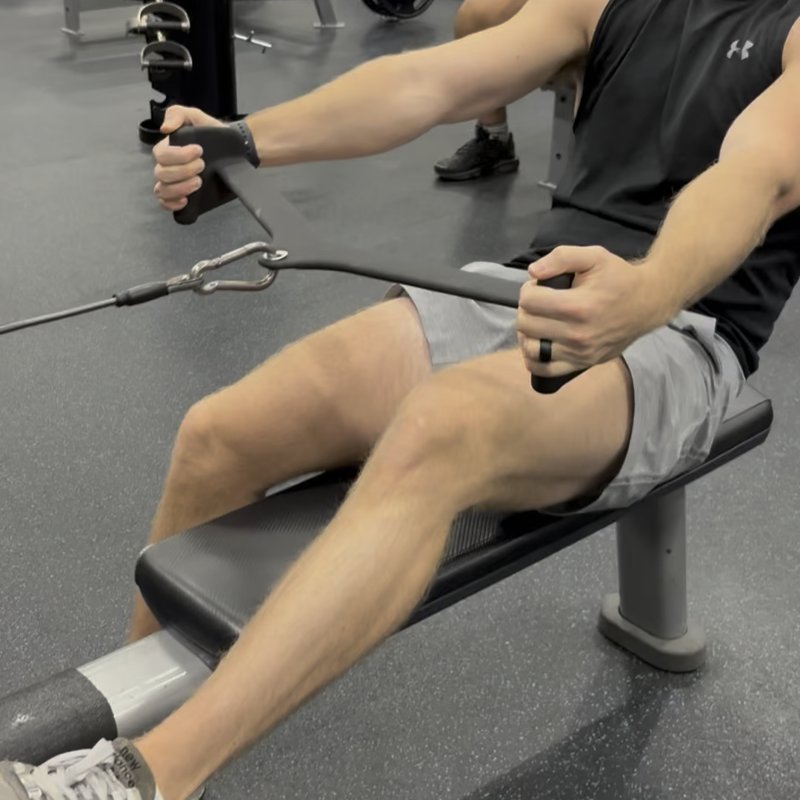
Log in to watch video demonstrations
Login to Watch3 video demonstrations available
Find more video demonstrations in the Gravitus app
Track your progress with Gravitus
Download Gravitus to log your workouts, track your progress, and join a community of fitness enthusiasts.

Helpful Resources
One Rep Max Calculator
Find your one rep max for any exercise without maximal testing. Essential for developing effective strength training programs.
Calculate 1RMWorkout Programs
Follow structured workout programs created by fitness professionals to maximize your strength and muscle gains.
View Programs